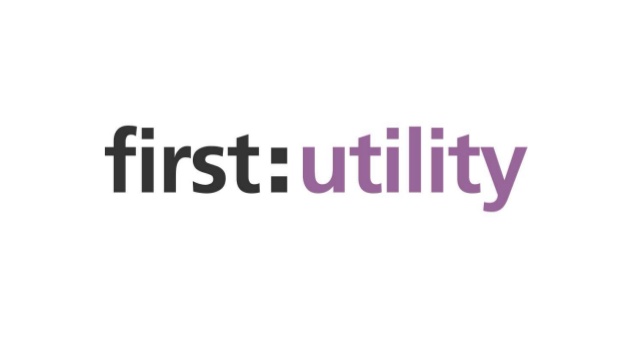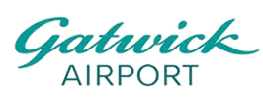You Ask, We Answer: Which Web Server is Truly Best in Class?
Here at Sirius, we often get asked, "Which web server is truly Best in Class? Is NGINX still the overall winner, or are newer platforms like Caddy or LiteSpeed superior?". This is a very good question, and one that deserves a clear, honest answer. We understand the need to choose the right foundational technology, as this decision affects your scalability, resource costs, and operational agility for years to come. Consumers are inherently driven by information and comparison when making purchasing decisions, often obsessing over reviews and rankings.
We want to be upfront: NGINX is often the industry gold standard for high concurrency, but the truth is, due to major differences in underlying architecture and specialized feature sets, NGINX might not be the optimal fit for every application. For instance, NGINX might not be the best choice for legacy hosting or modern, highly automated microservices. This article will honestly compare these leading web servers, explaining the architectural, performance, and operational factors that drive success in different environments. Our goal is to be fiercely transparent, allowing you to understand the trade-offs—from higher resource costs to dynamic configuration agility—and make the most informed decision possible for your specific needs.
Section 1: The Foundational Schism: Process vs. Event-Driven Architecture
The strategic "Best in Class" designation for a web server is conditional on its core architectural design, which fundamentally dictates performance, resource utilization, and operational expenditure (OpEx). The market is split into two primary camps:
1. Process-Driven (Synchronous) Model: Apache HTTP Server
Apache HTTP Server historically relies on a process-driven, synchronous architecture, typically using Multi-Processing Modules (MPM) to manage connections.
- Operation: Apache generally spawns a new process or thread for *each* incoming connection request.
- Trade-off: This synchronous model guarantees resource isolation but demands higher consumption of system resources (CPU and memory) under heavy traffic loads because resources are duplicated for every sustained connection.
- Cost Implication: Choosing Apache for massive concurrency implies greater infrastructure expense, as operational costs scale directly with the higher resource utilization per connection. Apache is best suited for legacy applications demanding maximum flexibility and compatibility.
2. Event-Driven (Asynchronous) Model: NGINX, LiteSpeed, and Caddy
NGINX, LiteSpeed, and Caddy all utilize a modern, highly efficient event-driven, non-blocking architecture.
- Operation: A small, fixed number of single-threaded worker processes use an event loop to manage thousands of concurrent connections simultaneously via asynchronous callbacks.
- Efficiency: This model virtually eliminates the expensive CPU overhead associated with context switching between numerous threads, which plagues synchronous systems.
- Resource Advantage: The architecture translates into a lower memory footprint and superior handling of concurrent connections. A single NGINX worker can manage tens of thousands of simultaneous, potentially idle connections with negligible resource consumption.
- Cost Implication: The high efficiency of these servers results in substantially lower OpEx for organizations managing high-traffic web applications.
Section 2: Defining "Best in Class" by Specialized Role
To be considered "Best in Class" requires excelling within a specific operational role, balancing performance with architectural necessity.
| Workload Characteristic | Required Performance Focus | Best in Class Solution | Justification |
|---|---|---|---|
| High Traffic/Static Assets/Edge Layer | Maximum Throughput, Low Latency, Efficient Concurrency | NGINX | Superior event-driven architecture and mature load balancing/reverse proxying capabilities. |
| Dynamic Content (CMS/PHP) Hosting | Optimized PHP Processing, Advanced Caching | LiteSpeed | Proprietary LSAPI protocol and integrated LSCache deliver superior resource efficiency and speed. |
| Microservices / Containerized / CI/CD | Automation, API Configuration, Small Footprint | Caddy | Automatic TLS, JSON config API, and Go language design are ideal for dynamic environments. |
| Legacy Systems / Custom Modules | Backward Compatibility, Decentralized Configuration | Apache HTTP Server | Flexibility of MPMs and long-standing support for third-party modules and .htaccess configuration overrides. |
1. NGINX: The Edge King and Static Champion
NGINX is considered the unrivaled champion for high-concurrency static content delivery. Its role is fundamentally defined by its efficiency as a middle-layer component, specifically designed to function as a highly optimized reverse proxy and load balancer.
- Edge Role: NGINX excels at offloading resource-intensive tasks from the application server, such as SSL/TLS termination and content caching.
- Load Balancing: It provides essential strategies like Round Robin, Least Connections, and IP Hash. However, key operational features like dynamic configuration via an API and proactive Active Health Checks are restricted to the commercial NGINX Plus version.
2. LiteSpeed: The Dynamic Content Acceleration Leader
LiteSpeed Web Server (LSWS) is classified as Best-in-Class for environments running high-performance dynamic content, particularly those built on PHP, often claiming speeds up to 40 times faster than Apache for dynamic content.
- Caching Advantage: This edge is rooted in its proprietary LSAPI protocol (optimizing PHP execution) and exclusive, integrated LSCache technology. This integrated cache mechanism outperforms external, plugin-based caching solutions and provides optimization NGINX cannot natively match.
- Compatibility: LiteSpeed Enterprise is engineered as a "blazing-fast drop-in replacement for Apache," maintaining high compatibility with existing configuration files, which is critical for shared hosting environments.
3. Caddy: The Automation and Microservices Default
Caddy is recognized as the Best-in-Class solution for rapid deployment, automation, and containerized/microservices environments.
- Security Automation: Caddy’s standout feature is its built-in, default provision of automatic HTTPS (TLS certificates via Let's Encrypt), eliminating the operational overhead and security risk of manual certificate management required by NGINX and Apache.
- Agility: Its native configuration is a declarative JSON document that can be manipulated via a RESTful API. This API-driven approach ensures all configuration changes are atomic and hitless (without service interruption), making it intrinsically suitable for high-velocity containerized settings.
Section 3: Feature Gaps and Future-Proofing
Modern infrastructure requires servers that adhere to emerging communication standards and minimize operational risk through automation.
1. HTTP/3 (QUIC) Protocol Leadership
The adoption of the newest major protocol, HTTP/3, is crucial for performance gains over unstable networks.
- Leaders: Caddy (since v2.6+) and LiteSpeed (since v5.4+) currently demonstrate clear leadership by offering full, stable support for HTTP/3.
- Laggards: NGINX Open Source currently offers only experimental HTTP/3 support (v1.25+), often requiring users to implement specialized builds. Apache maintains no native HTTP/3 support and has no publicly available integration plan.
2. Configuration Agility and Commercialization
The distinction between open-source and proprietary feature sets often dictates long-term Total Cost of Ownership (TCO).
- The NGINX Lock-in: The highly valued operational agility features, such as the dynamic configuration API for upstream reconfiguration, are commercialized and restricted to the NGINX Plus license. NGINX Open Source typically requires a graceful configuration reload (or process restart) to apply changes, which can introduce operational instability and latency spikes in high-velocity container clusters.
- The Caddy Advantage: Caddy provides its full dynamic configuration API and automatic HTTPS capabilities within its free, open-source core. This distinction suggests Caddy caters to developers who expect agility and automation to be freely available, unlike the commercial models of NGINX Plus and LiteSpeed Enterprise.
Section 4: Strategic Recommendations and Conclusion
The strategic decision for adopting a web server hinges on balancing architectural strengths with operational and financial risks.
Choosing the Optimal Path (The Trade-Offs)
The platforms balance four key risks that must be addressed transparently:
- Cost: The higher resource overhead associated with the process-driven Apache architecture.
- Complexity: The advanced expertise required for correctly configuring NGINX to avoid catastrophic misconfigurations or stability issues.
- Maturity: The perceived ecosystem risk associated with Caddy's newer technology stack.
- Licensing: The necessity of purchasing NGINX Plus or LiteSpeed Enterprise to unlock crucial enterprise-level agility features.
For organizations seeking enterprise-grade stability, there are three clear options based on core needs:
- Raw Performance and Static Delivery (NGINX): Choose NGINX if the priority is maximizing throughput and managing high concurrency at the edge. If dynamic configuration or vendor support is needed, the proprietary NGINX Plus subscription becomes a necessity, priced between approximately $2,500 and $5,000 annually per instance depending on the required SLA.
- Application Optimization (LiteSpeed): Choose LiteSpeed if superior out-of-the-box performance and integrated caching for dynamic PHP/CMS applications are paramount.
- Security Automation and Agility (Caddy): Choose Caddy if you require native automatic HTTPS and atomic dynamic reconfiguration for modern microservices deployments.
Hybrid Deployment Strategy
The highest performing and most resilient architectures often employ a hybrid model. The recommended strategy is to deploy NGINX as the front-end Reverse Proxy to handle static assets, caching, and SSL termination (NGINX's strength). Dynamic requests are then delegated upstream to a specialized server like LiteSpeed (for high-traffic PHP/CMS) or Apache (for legacy applications and decentralized configuration needs). This strategic division of labor leverages the specific "Best in Class" strength of each server.
















































